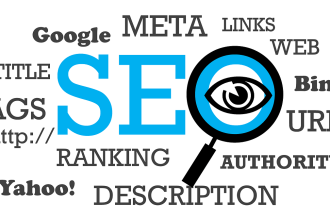Webflow and WordPress function similarly, but they are distinct products taking different approaches to building websites. When you decide to choose between Webflow and WordPress for your website building, it all comes down to the experience of your website builder and the intentions you have with your website. They have a difference in how they carry out their function, but both are effective depending on your needs. Here’s a comparison of Webflow and WordPress to determine which is best for you.
Ease of Set Up
You can easily get your website working through Webflow easily because it is an all-in-one SaaS product that is cloud-based, meaning you have everything you need at hand to complete setting up your website. Setting up a website with Webflow can accommodate even lower-level skilled coders and expert Webflow development skills. You will only need to know and understand CSS and HTML knowledge because the survey questions’ success will depend on this knowledge. Once they ascertain you are well versed with that information, you are enrolled for their onboarding tutorials. You are walked through a tutorial by the Webflow bot where you can highlight the main sections you need knowledge on, and they also give you knowledge of what they do. Once you feel satisfied with the information offered, you may proceed to build your site immediately. While WordPress setup is complex. WordPress does not host websites as part of the package, meaning you arrange and pay separately for a domain and host and figure out which host is right for you. You will therefore need to download WordPress once you have your host. There are WordPress installers tools for process simplification, but Webflow offers a simpler setup process overall.
Pricing
Comparing Webflow and WordPress prices may be challenging because they are differently packaged. Webflow is not free, but it includes everything in one monthly package. The webflow plan is inclusive of everything needed to host and build your website. There are basic, business, standard and advanced packages billed annually. It is for you to know and understand your needs and get the right package pricing. Two categories are used in billing, one plan to build your site and the other to manage it. While in WordPress, it is free to use. However, you will still pay for the services indirectly but through a third-party provider who provides you with hosting, templates, plugins, and a domain name. It is particularly useful for users lacking a web developer who may build and design their website. Note that you will also pay for the web developer’s time and services. You can opt to get premium services if you do not want them to appear very basic. Prices depend on several factors, such as the host, custom domain, themes, etc.
Accessibility
You can get started as a newbie in building your first website. For content managers and designers, creating a website via Webflow is particularly crucial and engaging due to the visuals involved with minimal coding requirements. For a non-preset website builder templates, consider building your website via using drag-and-drop style applications with built blocks known as containers. Webflow is an excellent way to build a website with zero coding. However, Webflow still has codes that you can access if you request them. Webflow gives you the will to build and manage your website without needing the codes. However, building a website with WordPress will require knowledge of coding. You will require to know something about HTML if you need to use a theme that is not a WordPress preset. You must integrate plugins for you to use drag-and-drop designs, which may essentially make your work easier like Webflow’s, but this comes with a price; you need to purchase a plugin package.
Customer Service
When you pay a monthly fee in Webflow, there are benefits that come with the package, such as customer service, improvements on products, and new feature development. Webflow’s customer support system works perfectly when you do not have web developers to keep checking the functionality of your website. They are always ready to help when things go wrong. However, WordPress is an open platform with zero customer support. You can only depend on Google’s help on maybe how to fix a problem you are experiencing on WordPress.
In conclusion, Webflow and WordPress can be the right platform for your website building, depending on your needs. In some cases, it is challenging to compare the two, such as the pricing factors. But generally, Webflow seems like a better option than WordPress because it has ease of access, is easy to set up, has excellent customer service, and does not require a web developer’s expertise to help you build a website. But in some instances, such as hosting a blog, WordPress takes the win. The general opinion is that Webflow is the right website builder for you than WordPress.















